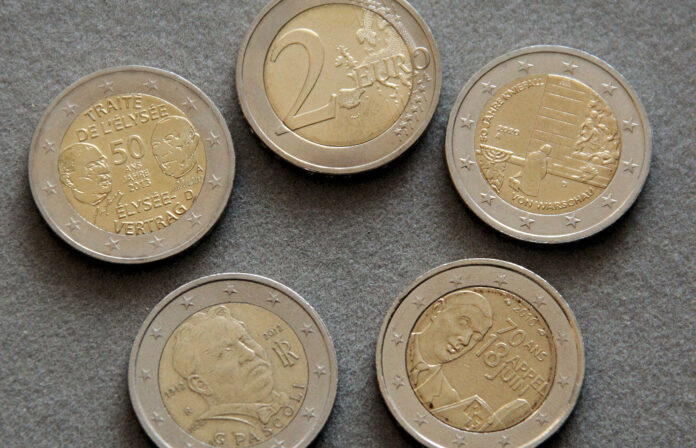
Since many euro countries have apparently decided to stop issuing 2-euro commemorative coins intened for circulation, there is growing concern among collectors. Indeed, it is to be feared that further countries will follow suit and only issue brilliant uncirculated (BU) and Proof (PR) versions in the future. Packaged in high-quality folders, coin cards or cases, these issues are considered the highlights of any mint – and, incidentally, they are way more expensive than their mint state counterparts.
If this change is actually to come about, collectors will once again be left out or have to dig deeper in their pocket. And “deeper” isn’t possible for everyone. So, is this popular subject already threatened with extinction?
How Do Small Euro States Issue Their 2-Euro Commemorative Coins?
Let’s first take a look at the world of small euro states. The Principality of Monaco stopped issuing 2-euro commemorative coins for circulation as early as in 2015. Before that, however, they still existed. But Monaco isn’t the only country to push this development. The Republic of San Marino didn’t even produce pieces for circulation to begin with. Andorra did not issue a circulating version of its first 2-euro commemorative coin of 2014, and doesn’t do so to this day. Although the Vatican still produces a small quantity of 2-euro commemorative coins for circulation, most pieces are reserved for residents and employees. Thus, there are hardly any pieces for circulation either.
One may wonder whether there are no clear guidelines about this at all. Apparently, there aren’t! But let’s keep looking and visit some other euro countries.
Until 2016, the Kingdom of Belgium issued 2-euro commemorative coins for circulation. But that was the end of it – ever since, the country has been issuing such coins only as BU versions in coin cards or a case (PR).
While pieces for circulation are still produced in the Grand Duchy of Luxembourg, mintage figures are being reduced every year. While 500,000 specimens for circulation were produced in 2016, only 300,000 were issued in 2017. In contrast, mintage figures of both high-priced versions (BU and PR) have increased.
The situation is very similar regarding Malta. There, some coins in circulation quality are directly launched in coin cards. This definitely increases turnover. Here, too, mintage figures are constantly being reduced. By now, only BU pieces can be found in coin cards.
How Do Big Euro Countries Issue Their 2-Euro Commemorative Coins?
In recent years, Spain has also significantly reduced the mintage figures of 2-euro commemorative coins intended for circulation. In 2016, the impressive number of 3,400,000 circulation quality specimens were issued for the “UNESCO World Heritage: Aqueduct of Segovia” commemorative coins. One year later, only 500,000 specimens were issued for circulation regarding the issue “UNESCO World Heritage: Churches of the Kingdom of Asturias”.
That leaves Austria, Cyprus, Estonia, Finland, France, Germany, Greece, Ireland, Italy, Latvia, Lithuania, the Netherlands, Portugal, Slovakia and Slovenia. These countries still produce and issue enough specimens of their 2-euro commemorative coins for general circulation.
What Does This Mean for Collectors?
A clear cut seems to be emerging in the world of 2-euro commemorative coins, separating well-off collectors and collectors who “feed” their collection from circulation money or inexpensive offers on the secondary market. To the detriment of collectors, the latter are robbed of the hope of finding new pieces in circulation by such an issuance policy.
Let’s not forget that we are talking about commemorative coins, not about collector coins that can only be used as legal tender in the country where they were issued! 2-euro commemorative coins can be used for payment purposes in all euro countries. However, the coins can circulate only if they are issued as regular circulation coins. If the pieces only exist as BU or PR versions, they will hardly ever circulate.
Conclusion: Article 4 Council Regulation (EU) No. 566/2012 should be revised, even if it’s only a recommendation. Some aspects are just not defined precisely enough. For example, it isn’t specified whether it’s mandatory for euro countries to also mint and issue 2-euro commemorative coins for circulation. Some countries are already taking advantage of this loop by gradually abandoning the issuance of regular versions of these pieces. In the end, circulation-quality versions of 2-euro commemorative issues will probably no longer exist.
But how does the story go on? Will other euro countries follow suit and only issue high-priced versions of their 2-euro commemorative coins in the future? I hope they don’t, it would probably be the beginning of the end of countless 2-euro commemorative coin collections.
Although the collecting world is very concerned, the European Commission has not yet commented on the issue. It should not hesitate any longer and establish clear legal guidelines. Collectors of 2-euro commemorative coins across the world would be more than happy about such a decision.
In the online database Cosmos of Collectibles you can find all 2-euro coins.
Don’t miss out on new coin issues! Subscribe to the Cosmos of Collectibles newsletter for free.
The author numiscontrol already dealt with the rarities among 2-euro commemorative coins of other countries, too. Here you can read his articles on coins from
And here you can find his series on rare 2-euro pieces from Germany and on the joint EU issues (in German).
Find out more about our author numiscontrol, alias Reiner Graff, in our Who’s Who.
The collecting expert made it his mission to introduce beginners to the world of coin collecting – here you can read his series “Coin Care in Simple Terms”.



